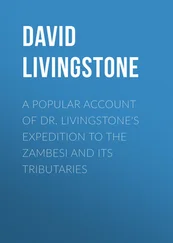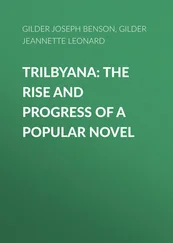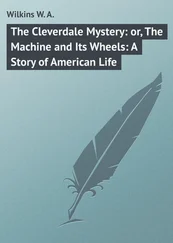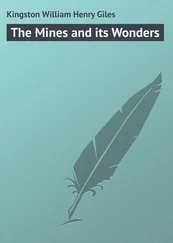Wilhelm Joseph von Wasielewski - The Violoncello and Its History
Здесь есть возможность читать онлайн «Wilhelm Joseph von Wasielewski - The Violoncello and Its History» — ознакомительный отрывок электронной книги совершенно бесплатно, а после прочтения отрывка купить полную версию. В некоторых случаях можно слушать аудио, скачать через торрент в формате fb2 и присутствует краткое содержание. Жанр: foreign_antique, foreign_home, music_dancing, на английском языке. Описание произведения, (предисловие) а так же отзывы посетителей доступны на портале библиотеки ЛибКат.
- Название:The Violoncello and Its History
- Автор:
- Жанр:
- Год:неизвестен
- ISBN:нет данных
- Рейтинг книги:3 / 5. Голосов: 1
-
Избранное:Добавить в избранное
- Отзывы:
-
Ваша оценка:
- 60
- 1
- 2
- 3
- 4
- 5
The Violoncello and Its History: краткое содержание, описание и аннотация
Предлагаем к чтению аннотацию, описание, краткое содержание или предисловие (зависит от того, что написал сам автор книги «The Violoncello and Its History»). Если вы не нашли необходимую информацию о книге — напишите в комментариях, мы постараемся отыскать её.
The Violoncello and Its History — читать онлайн ознакомительный отрывок
Ниже представлен текст книги, разбитый по страницам. Система сохранения места последней прочитанной страницы, позволяет с удобством читать онлайн бесплатно книгу «The Violoncello and Its History», без необходимости каждый раз заново искать на чём Вы остановились. Поставьте закладку, и сможете в любой момент перейти на страницу, на которой закончили чтение.
Интервал:
Закладка:
The Sainte-Colombe mentioned above had, besides Marais, two noteworthy pupils, Rousseau and Hervelois. Jean Rousseau perfected himself as a distinguished gamba player, and was actively engaged in Paris during the second half of the seventeenth century. He also made himself more widely known by the production of two “livres de pièces de viole,” as well as a gamba school, “Traité de la viole.” The latter work appeared in Paris in 1687.
Caix de Hervelois, born about 1670, became, under the direction of Sainte-Colombe, an excellent player, and after further study entered the service of the Duke of Orleans. In Amsterdam he had two books of his compositions published: “Pièces pour la basse viole avec la basse continue.”
Another French gambist of distinction in the seventeenth century was Antoine Forqueray. He was born in 1671 in Paris, and was one of the performers at the chamber music Concerts of Louis XIV. Forqueray received instruction from his father. At the age of five years he already excited the astonishment of the king by his performances, who called him “his little wonder.” In the year 1745, on June 28, he died at Nantes, whither he had retired upon his pension.
His son, Jean Baptiste Antoine, born on April 3, 1700, in Paris, was esteemed as the most able French gamba player of his time. He also at five years of age was heard with such favourable result before Louis XIV. that he later on became a member of the royal music society. He again had a son, whose christian name was Jean Baptiste, born about 1728, who was also a gambist and published several books of compositions for his instrument. He does not seem, however, to have made himself conspicuous as a performer.
Gerber mentions in his musical Lexicon a Parisian gambist of the eighteenth century of the name of Forcroix, or Forcroy, “whose delightful playing Quantz, who was in Paris in 1726, admired.” Possibly this artist may be identified as the A. Forqueray mentioned above.
The art of gamba playing was pursued in Germany with as great or perhaps greater zeal than in England and France. While the pursuit of music by the English and French was confined chiefly to London and Paris, there were in Germany many courts who admired and cherished with fostering care the art of music; and the result was, especially after the tumult of the thirty years’ war had subsided, a widely-spread musical life throughout the whole of the German nation.
Amongst the first German players to be mentioned is David Funk, born about 1630, in the Saxon town of Reichenbach. Gerber says of him, he was “an excellent musician and master of the violin, the viola da gamba, the angelica, 29 29 Concerning this instrument, Mattheson says: “The Angelique, somewhat resembling the lute, must have been far easier to play, and has more cords or strings, which one can accurately touch by reason of their arrangement without moving the left hand much. There is nothing specially besides to remember.” It was, therefore, an instrument of the lute kind.
the clavier, and guitar”; and then goes on: “Funk was in every way a genius. His chief study, which he carried to no small degree of perfection, was that of the law. He was, besides, a wit and a poet, and was reckoned among the good German poets of that time. As a musician he was not only a virtuoso on all the above-named instruments, but he was also a composer, and won the applause of the public in a variety of styles, for the church as well as for the chamber.... How and where he had gained all these distinctions there is no account. He was first known as a composer in the year 1670, by the publication of his work on the gamba.” This enthusiastic account emanated, according to Gerber’s report, from the precentor Joh. Martin Steindorf, of Zwickau, who was personally acquainted with Funk.
In the year 1682 Funk gave up his appointment in Reichenbach and accompanied the “East Friesland Princess” into Italy as secretary, where he remained with his mistress seven years. After her death there in 1689 he returned to his native land, and, driven by the necessity of beginning again to earn his livelihood, he had no other choice but to accept, at “Wohnsiedel (Wunsiedel?), the miserable post of organist and girls’ schoolmaster.” Funk’s dissolute character led him to misuse his office as teacher to immoral purposes with the girls entrusted to his care, so that he was compelled “by night and fog to fly in order to escape the rage of the parents.”
From that time Funk led a vagabond life. He next betook himself to Schleitz, and remained three months at the Court there. Thence he was obliged to decamp as he was rigorously pursued by the police of Wohnsiedel. He made his way to Arnstadt, but did not reach that place. He was found one day lying dead underneath a hedge.
At the same time as Funk, the virtuoso August Kühnel was at work—born August 5, 1645, in the little town of Delmenhorst, in Oldenburg. From 1695 to 1700 he lived at Cassel, holding a position at the Court. During this time he published “Sonatas or Parts for one or two Viole da gamba, together with a bass, 1698.” According to Gerber, several of his works should be in the Museum at Cassel. In composition, Kühnel was a pupil of Agostino Steffani during his residence in Hanover. His successor in office appears to have been a certain Tielke, 30 30 He was perhaps a brother or relation of the instrument maker Tielke mentioned pp. 7 and 8 of this work.
for he was from 1700 to 1720 gambist in the Cassel chapel.
Another gambist of the name of Kühnel (Johann Michael) lived in the second half of the seventeenth century, and was engaged at the Berlin Court. From here he went, in 1717, to Weimar, and later on to Dresden, in the service of Field-marshal Flemming. He seems to have ended his life in Hamburg. Of his compositions there appeared at Rogers’s in Amsterdam, “Sonates à 1 et 2 Violes de gamba.”
One of the most important gamba players of Germany at the end of the seventeenth and beginning of the eighteenth century was Johann Schenk. As he appears to have had his second work, “Konst œffeningen,” printed at Amsterdam in 1688, consisting of fifteen sonatas for the gamba and bass, it may be concluded that he was born about the middle of the seventeenth century. Towards the end of it he was chamber musician in the Elector Palatine’s service, which post however he must have given up at the beginning of the eighteenth century, for he is said to have settled in Amsterdam about that time. Whether he remained there to the end of his life is doubtful, for on the title-page of his sixth work, “Scherzi musicali, per la viola di gamba con basso continuo ad libitum,” he calls himself “Chamber Commissary and Chamberlain of the Elector Palatine.” On the other hand, Mattheson informs us that he (Schenk) was named inspector of the fish market, because he had played the gamba so well! On the whole, he published eight works, chiefly pieces and sonatas for the gamba, as well as for the violin with a bass; a copy of the one, of which the title is mentioned above, is preserved in the Royal Library at Sondershausen. This comprehensive collection, consisting of 101 musical pieces, is dedicated to the Elector Palatine Prince William, consequently to the same art-devoted Prince to whom Corelli, in the year 1712, dedicated his “Concerti Grossi.” 31 31 Compare p. 8 .
The title-page of the “Scherzi musicali” bears no date, but it maybe assumed that they appeared between 1692 and 1693, for Schenk published his Op. 3 in the first and his Op. 7 in the latter year, and the collection in question, as already observed, bears 6 as the number of the work. The compositions which it contains are grouped after the manner of “Chamber Sonatas” or “Suite.” It is true that the author has made use of neither of these terms, but the keys chosen by him leave no manner of doubt as to the description of instrumental compositions to which these “Scherzi musicali” belong. We know that it was usual for all the subjects of a suite at that period to be in the same key. Looking from this point of view at Schenk’s work for the gamba, it is apparent that it contains twelve suites or chamber sonatas, of which some indeed are unusually long. For example, the second suite (F major) and the fourth (A minor) consist of fourteen pieces. Dances, such as Allemandes, Courantes, Sarabandes, Gigues, Gavottes, and Minuets, make up by far the greater portion of the volume. There are also a couple of Bourrées; but then the composer gives also Chaconnes and Passacailles with variations, which in some cases are of great length, as well as Rondos and “Arias.” The fourth sonata contains moreover a Canzone and an “Allabreve”; the ninth, a Fugue; the eleventh, the same 32 32 It is worthy of observation that this second fugue (D minor) has the theme which Mozart, nearly 100 years later, made use of for the second Finale of the “Magic Flute.” There is no doubt this was purely accidental, as Mozart could hardly have seen Schenk’s work.
and an Overture. The greater number of the suites begin with a Prelude, though, on the contrary, the second begins with a Fantasia, the fourth with a “Sonata con Basso obligato,” and the eighth with an “Overture,” the ninth with a “Capriccio,” and the twelfth with a “Caprice.” The mode of writing alternates from one to several parts, and the chords, by frequently doubling the intervals, are extended to five notes struck simultaneously. For the notation Schenk required four different keys—viz., bass, alto, discant, and treble, by which means the compass extends from  to
to  We conclude from this that Schenk, like the French gambist Marais, used a gamba with seven strings, and, indeed, the highest of them must have been tuned up to the one-lined G. Schenk must have gone considerably above the seventh fret of the fingerboard in order to reach the twice-lined B flat. With regard to the artistically musical quality of Schenk’s compositions for the gamba, they are mediocre; they bear no comparison with the violin compositions of Corelli of the same period. He succeeded best in the dances, compared with which the more elaborate productions appear poor and are in some measure incorrect. Especially is this true of the two so-called fugues, which do not rise above feeble attempts at fugues. It is, however, interesting to know what position Schenk took as one of the best reputed gamba virtuosos at that time with regard to composition, for his productions give an average idea of the executive capabilities of his contemporaries. At the same time, Schenk’s works prove very surely what double-stoppings, chords, and figures were possible on the gamba, and in this respect reveal a remarkable richness in various styles of playing.
We conclude from this that Schenk, like the French gambist Marais, used a gamba with seven strings, and, indeed, the highest of them must have been tuned up to the one-lined G. Schenk must have gone considerably above the seventh fret of the fingerboard in order to reach the twice-lined B flat. With regard to the artistically musical quality of Schenk’s compositions for the gamba, they are mediocre; they bear no comparison with the violin compositions of Corelli of the same period. He succeeded best in the dances, compared with which the more elaborate productions appear poor and are in some measure incorrect. Especially is this true of the two so-called fugues, which do not rise above feeble attempts at fugues. It is, however, interesting to know what position Schenk took as one of the best reputed gamba virtuosos at that time with regard to composition, for his productions give an average idea of the executive capabilities of his contemporaries. At the same time, Schenk’s works prove very surely what double-stoppings, chords, and figures were possible on the gamba, and in this respect reveal a remarkable richness in various styles of playing.
Интервал:
Закладка:
Похожие книги на «The Violoncello and Its History»
Представляем Вашему вниманию похожие книги на «The Violoncello and Its History» списком для выбора. Мы отобрали схожую по названию и смыслу литературу в надежде предоставить читателям больше вариантов отыскать новые, интересные, ещё непрочитанные произведения.
Обсуждение, отзывы о книге «The Violoncello and Its History» и просто собственные мнения читателей. Оставьте ваши комментарии, напишите, что Вы думаете о произведении, его смысле или главных героях. Укажите что конкретно понравилось, а что нет, и почему Вы так считаете.












![Edward Ellis - Adrift on the Pacific - A Boys [sic] Story of the Sea and its Perils](/books/753342/edward-ellis-adrift-on-the-pacific-a-boys-sic-s-thumb.webp)